direct chaining
1/8
There's no tags or description
Looks like no tags are added yet.
Name | Mastery | Learn | Test | Matching | Spaced |
|---|
No study sessions yet.
9 Terms
direct chaining
= a chaining strategy

example
entries: airport codes e.g. BHX, INN, HKG, IST…
table size: 10
hash function:
we treat the codes as a no in base 26 (A = 0, B=1, …, Z= 25)
example: ABC = 0×26×2 + 1×26 + 2 = 28
hashcode is computed mod 10 (to make sure that the index is 0, 1, 2, 3, … or 9)
example (see pic):
hash(BHX) = 1×26×26 + 7×26 + 23 mod 10 = 1
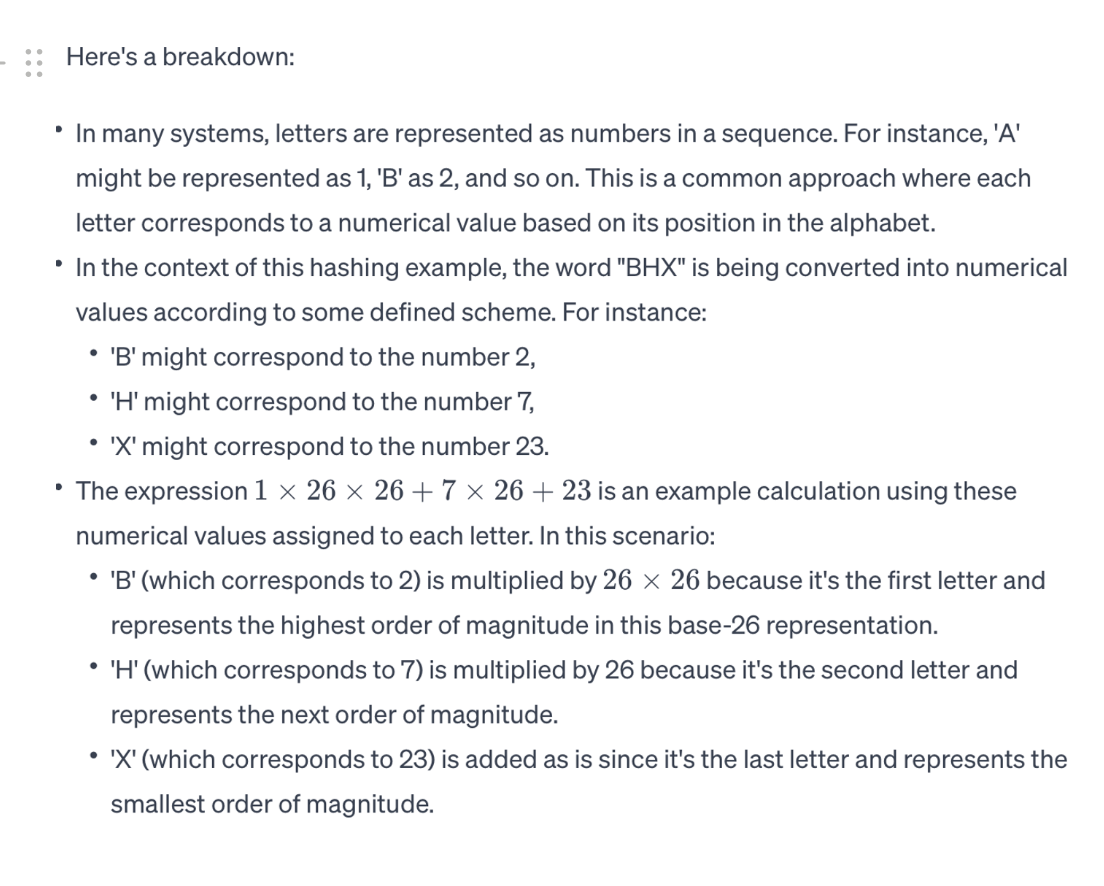
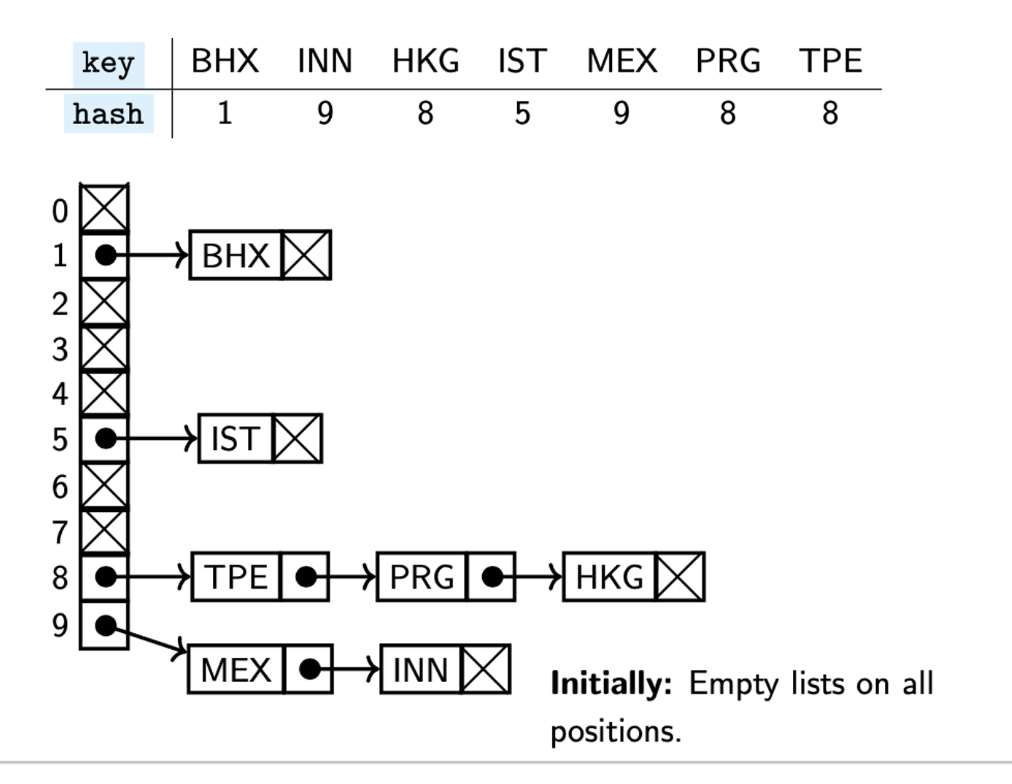
cont
to insert, always 1st check if the key we’re inserting is in the linked list on position hash(key). if it isn’t, we insert the key at the beginning of that list
(we’re inserting without duplicates)
to delete(key) we delete key from the l.l. stored on position hash(key), if it is there. Similarly, lookup(key) returns true/false depending on if key is stored in the list on position hash(key)

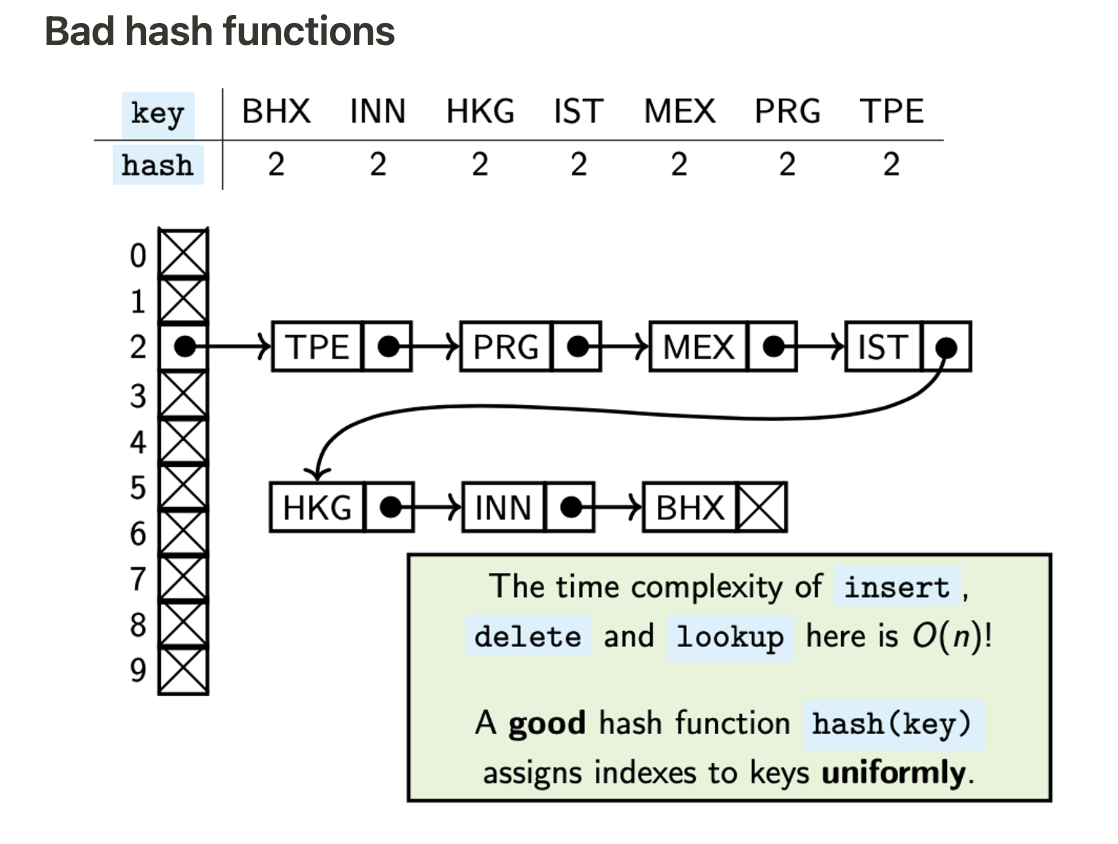
bad hash functions
the hash function assigns 2 to all keys = when inserting a new key, 1st check if key is stored in the linked list on position hash(key)=2.
this requires to go through all the elements alr stored in the hash table = O(n) time complexity
similarly, lookup + delete are also O(n)
to tackle = need a good hash function which uniformly distributes the keys among positions aka, given a random key, it out to have the same probability of being stored on every position

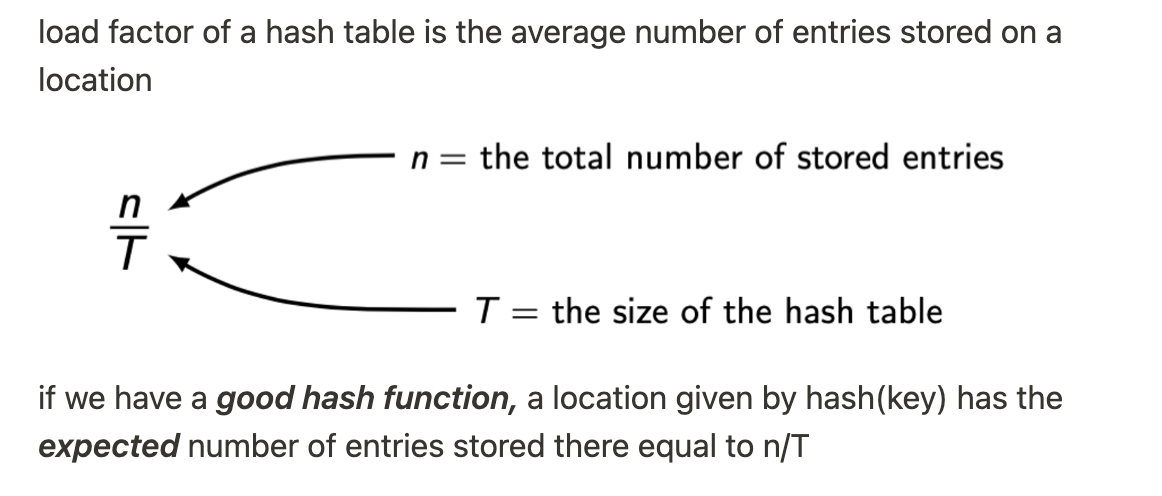
time complexity of direct chaining part 1
load factor of hash table = avg no of entries stored on a location
good hash function = a location given by hash(key) has the expected no of entries stored there equal to n/T
unsuccessful lookup of key:
key is not in the table
location hash(key) stores n/T entries, on average
= we have to traverse them all
load factor = how full hash table is, good hash function, the load factor 0.25 represents 25% of getting a collision
consequence of good hash function = the l.l. on position hash(key) , for a randomly selected key, has expected length n/T
“expected” = the list stored on position hash(key)might be longer, it might be shorter, but it’s length will most likely be approximately n/T (for a randomly selected key )
time complexity of direct chaining pt 2
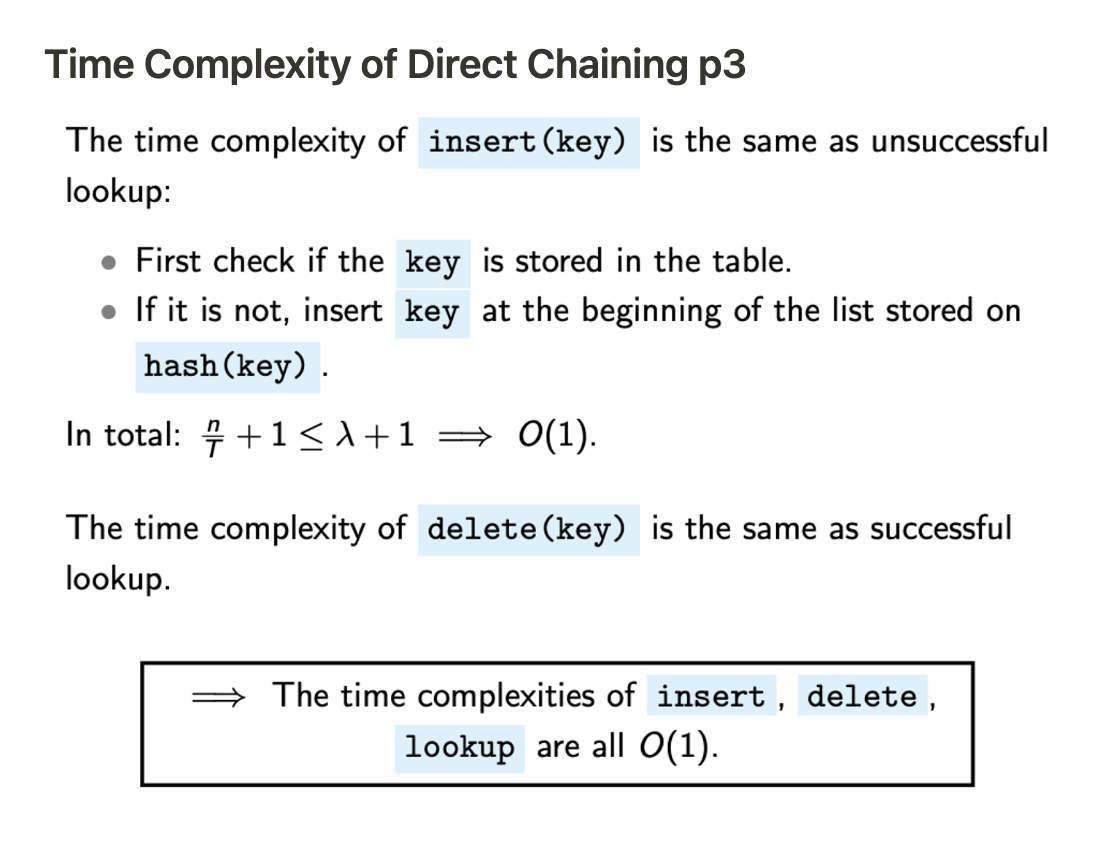
time complexity pt 3
to summarise
we made 2 assumptions:
we have a good hash function
we assume a max load factor
consequence of 1st assumption = the expected length of chains is n/T and the 2nd = n/T ≤ λ, for some fixed constant number λ
by assuming those 2 conditions, we have computed that the operations of hash tables are all in O(1)
whether hash function = good depends on distribution of data, on the other hand, making sure that the load factor is bounded by some λ can be done automatically
the consequence of our approach will be that the constant time complexity will be (only) amortised
disadvantage of chaining strategies
typically, alot of hash collisions = alot of unused space
linked lists require a lot of allocations (allocate_memory) which is slow
2 open addressing strategies which avoid those problems: linear probing + double hashing…..